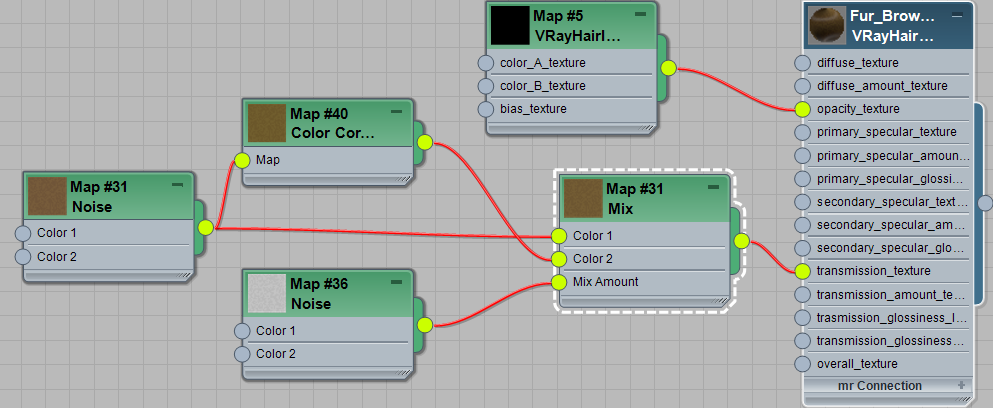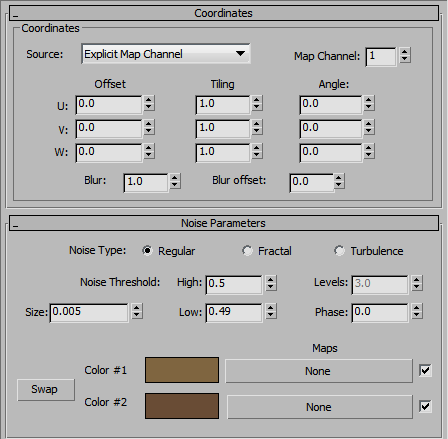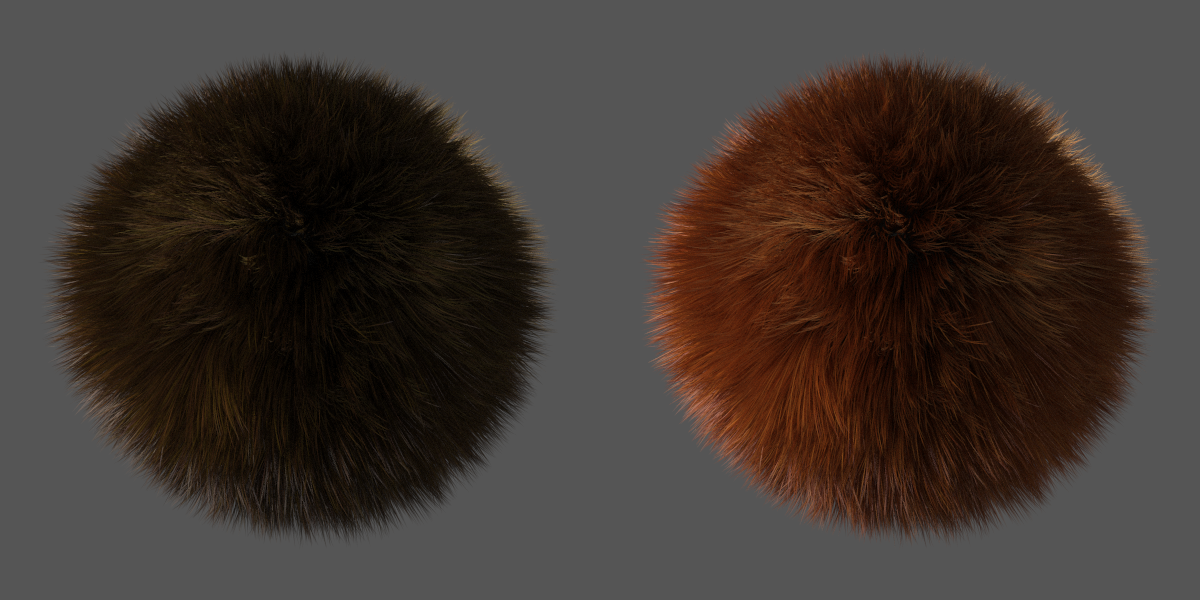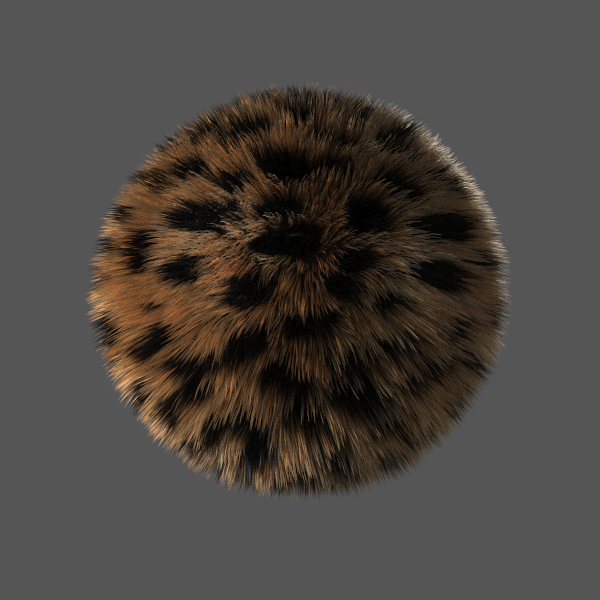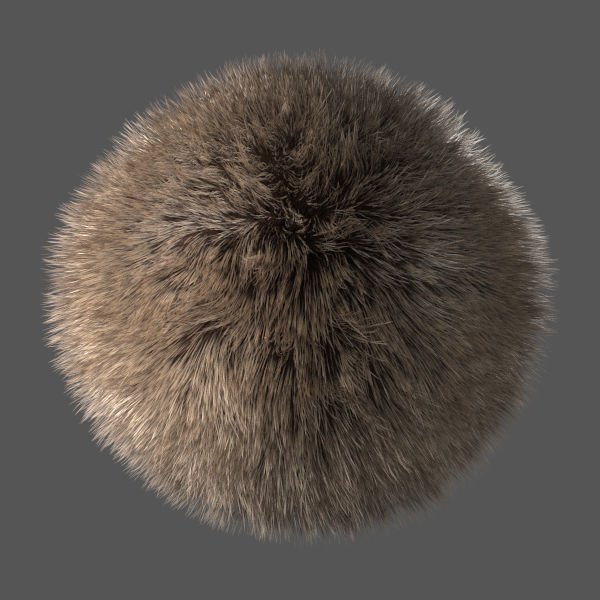Fur is similar to hair, with a couple of exceptions.
Sometimes, the animal doesn’t have all the hair strands in the same color. You can either use a texture with small noise with different colors in it, or set up a procedural texture as in the example below. This map mixes a couple of noise maps to create a 4-color procedural texture. The map goes into the Transmission slot.
To change the color, just adjust the two noise colors in the map and a little hue/sat/brightness variation is added automatically.
A lot of the time, an animal is coated in a colorful pattern, rather than being single-colored. This can be easily replicated by using an appropriate texture in the Transmission slot.
It’s a good idea to add some sort of colored noise to the map to simulate slight differences in strand color.
The hair strands are not always a solid color. If you look at some striped cat hair close-up, for example, you will see that each hair actually has multiple differently-colored sections.
We are going to use VrayHairInfoTx in the Transmission slot to drive a Gradient Ramp map for this effect.
Below is the Gradient Ramp setup. Note that the Gradient type is set to Mapped, and the map is VrayHairInfoTx with the default settings.


